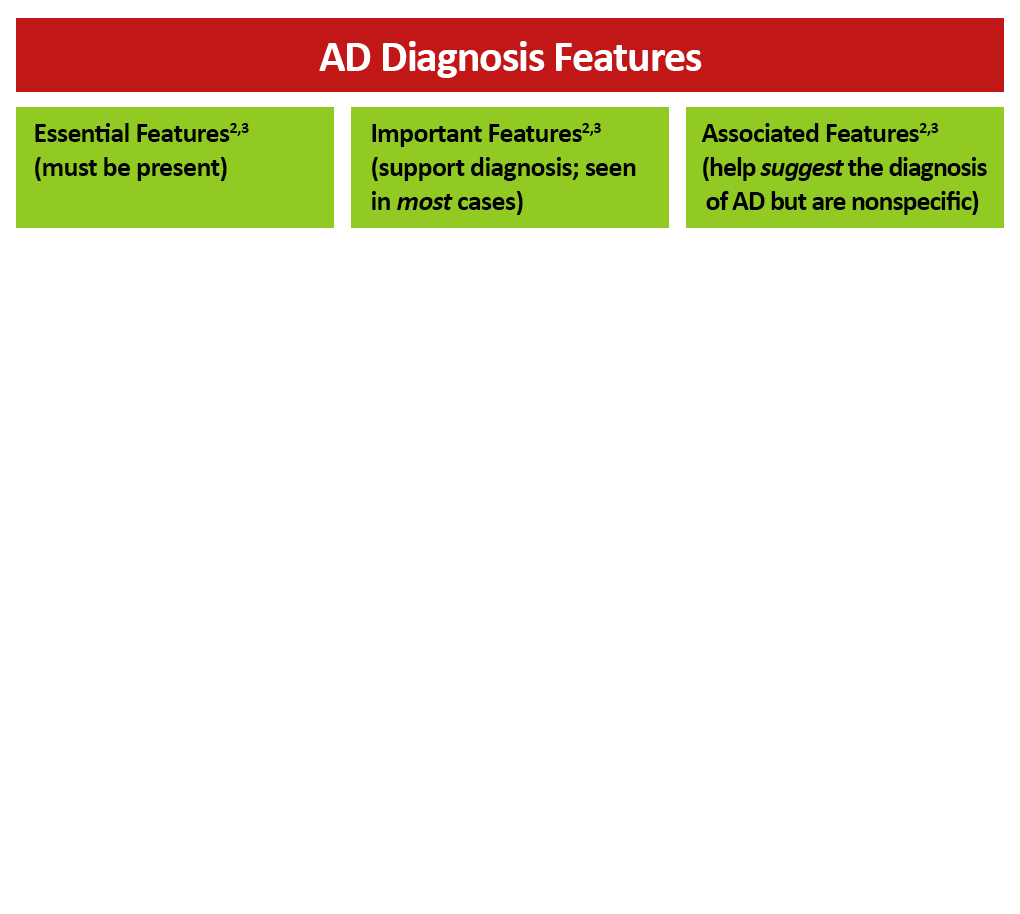Overview of AD Diagnosis
Symptoms and Physical Findings
The main physical findings associated with atopic dermatitis (AD) include xerosis, lichenification, and eczematous lesions. Eczematous changes are seen in varying locations, depending on the age of the patient (infant, child, or adult).1
The following symptoms and features are also commonly seen in AD:
- Pruritus
- Chronic and relapsing course
- Early age of onset
- Peripheral eosinophilia
- IgE reactivity
- Staphylococcus aureus superinfection
- Personal history of asthma or hay fever
- History of atopic diseases in a first-degree relative1
Symptoms and Physical Findings
According to the American Academy of Dermatology,2,3 patients with presumed AD should have their diagnosis based on a combination of features.

In addition, other conditions must be excluded, such as: scabies, seborrheic dermatitis, contact dermatitis, ichthyoses, cutaneous T-cell lymphoma, psoriasis, photosensitivity dermatoses, immune deficiency diseases, and erythroderma of other causes.2,3
For additional information on diagnosis of AD, we encourage you to visit the following references as well as our “Additional Reading” and “Quick Reference” sections.
References
- Kim BS. Atopic dermatitis. Updated July 27, 2022. https://emedicine.medscape.com/article/1049085-overview
- American Academy of Dermatology. Atopic Dermatitis Clinical Guideline. Accessed October 13, 2022. https://www.aad.org/practicecenter/quality/clinical-guidelines/atopic-dermatitis
- Eichenfield LF, Tom WL, Chamlin SL, et al. Guidelines of care for the management of atopic dermatitis: Section 1. Diagnosis and assessment of atopic dermatitis. J Am Acad Dermatol. 2014;70:338-351. https://doi.org/10.1016/j.jaad.2013.10.010
